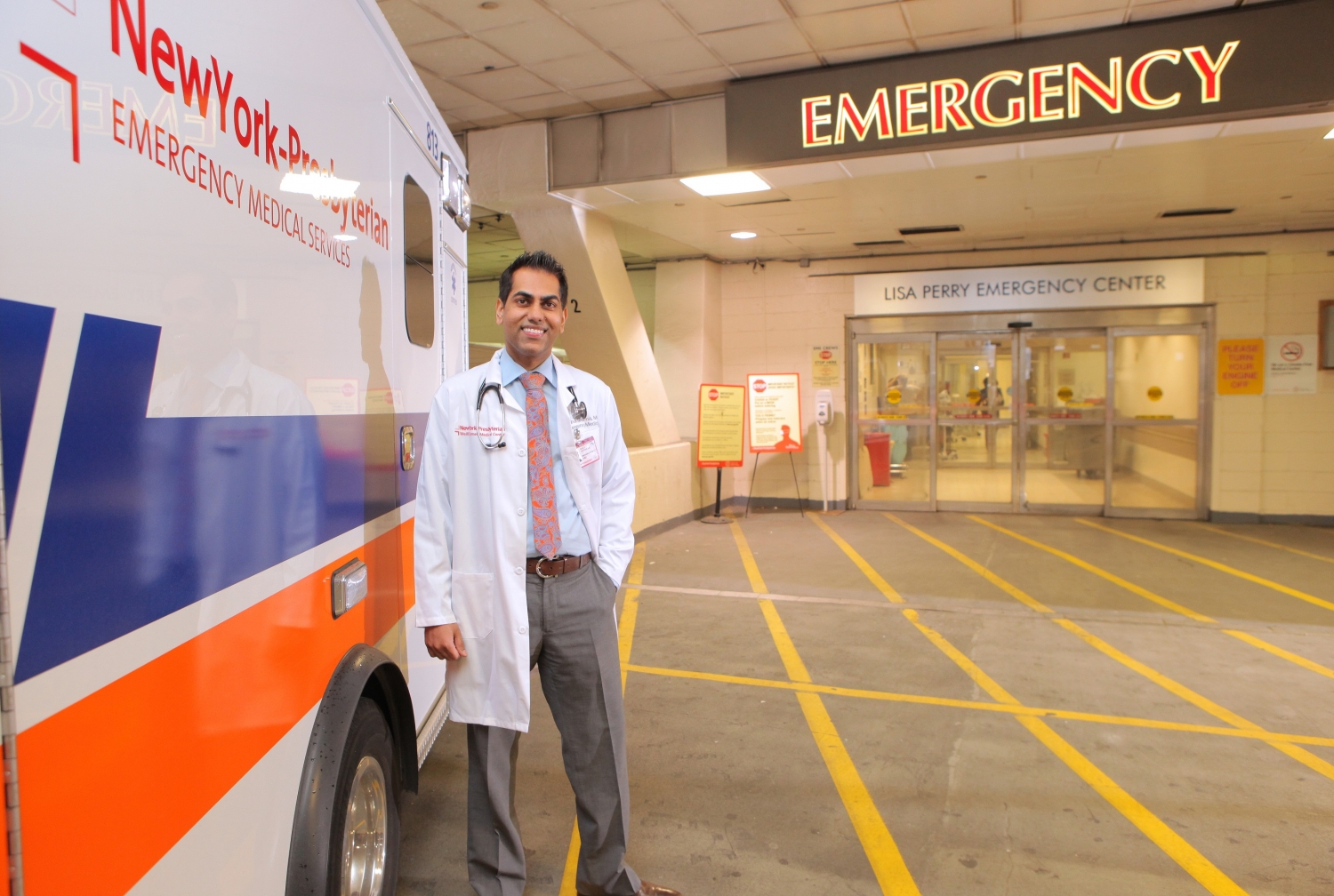In the era of COVID-19 and evolving technology, emergency care providers need to recognize that their care must extend beyond the hospital walls, says Dr. Rahul Sharma, chair of emergency medicine at Weill Cornell Medicine and co-author of a unew commentary in NEJM Catalyst.
The COVID-19 pandemic upended every aspect of health care, requiring emergency departments to overhaul their operations, and compelling patients and providers to rely more than ever on digital platforms.
"One thing that the pandemic did is that it forced us, not only as emergency providers and departments, but as health care leaders, to rethink the way we provide care and really reimagine the delivery of care,” said Dr. Sharma, who is also emergency physician-in-chief at NewYork-Presbyterian/Weill Cornell Medical Center. He co-authored the article, which published online Dec. 21, with Dr. Judd E. Hollander, senior vice president of healthcare delivery innovation at Sidney Kimmel Medical College at Thomas Jefferson University in Philadelphia.
The authors note that, historically, hospital emergency departments (EDs) have provided not only life-saving care, but also treatment for an array of ailments for which patients seek help.
“The need filled most often is being available for everyone who needs care, most of whom don’t have a true medical emergency,” the authors wrote. “As such, emergency physicians are the ‘availablists.’ We accept all patients at any time and there is no prescreening. Emergency physicians are always available.”
The abrupt changes to health care brought on by the pandemic, such as patient and provider reliance on telemedicine, shouldn’t be viewed as temporary, the authors write.
Citing the input-throughput-output model for treating emergency room patients, the authors offer new strategies. For example, a patient with an extremity injury could be evaluated in a virtual ED, instead of the actual emergency room, and scheduled for outpatient diagnostic tests during the virtual visit.
Another strategy is the use of community paramedicine. In this program, paramedics evaluate patients with more serious symptoms at home and can consult with emergency physicians by phone or video. Community paramedicine, along with remote monitoring technology, can also be used to track the recovery of hospital patients after discharge.
“The future of emergency medicine is that we are providing health care that is based on expertise, not location,” Dr. Sharma said.
Acknowledging that many patients lack digital access and the necessary skills, and have a mistrust in telemedicine in general, the authors write that those significant challenges require attention. But in improving telemedicine access, health care leaders can also address health care disparities in communities.
“Health care disparities were not created by technology and will not be fixed by technology alone,” they wrote. “Rather than focusing on telemedicine versus in-person care, we believe that telemedicine should be viewed as a way to support in-person care.”

